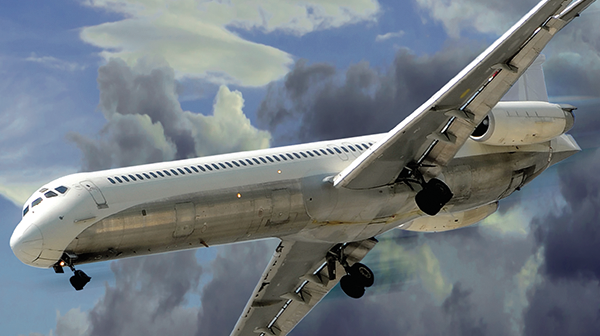

Explore This Issue
ACEP Now: Vol 34 – No 04 – April 2015Image Credit: © Paul Sancya/ /AP/Corbis
In this Aug. 16, 2012, file photo, flowers and pictures are shown at the memorial in Romulus, Michigan, to mark the 25th anniversary of the crash of Northwest Airlines Flight 255 near Detroit Metropolitan Airport. The aircraft crashed in the Detroit suburb of Romulus, killing all 154 people aboard except for a 4-year-old girl. Two people also died on the ground. In the new documentary, “Sole Survivor,” Cecelia Cichan, whose married name is Crocker, breaks her silence, discussing how the crash of the Phoenix-bound jetliner has affected her.
KK: Tell me about who you met on the scene. Who was your first contact that gave you a clinical assignment and what did you do then?
BW: The incident command center turned me over to one of the paramedics, and they got me into full bunker gear. We started going through some of the larger pieces of fuselage that could potentially house a survivor. We went through each of the large pieces of fuselage and then some of the bodies that were on the ground, and we assured ourselves that each one of them was, in fact, a non-survivor. One of the more surreal incidents was there was a relatively large piece of the middle fuselage that was still sort of intact and we climbed into it. We were walking down the aisle, stopping at each of the bodies again looking for a possible survivor, and I catch my air hose on a piece of debris. I feel my head and my air hose pull back, and I’m trying to reach back; I’m starting to panic. I’m inside the fuselage. I can see that there are a lot of gases around, a lot of smoke. It’s very eerie, and all of a sudden, I feel someone grab me from behind, and I think I screamed. I’m not sure, but the paramedic behind me saw that I had caught my hose. He grabbed me first and pulled me backwards to free my hose.
“Interestingly enough, the young lady who was the survivor actually has a tattoo of a McDonnell Douglas MD-82 on her hand as a reminder of being the only survivor of her family. I would love to meet her one day.”
KK: What did you take away from this experience that you use in daily practice now?
BW: We had to revamp what we were doing at that scene over and over again as the situation changed, as we realized that there were no survivors and now we had to collect all the bodies and try to identify them. By the way, I learned how to do a disaster identification autopsy.
KK: It’s interesting that they would put you into this role without previous forensic experience. What exactly did they have you do?
BW: Actually, they had collected the bodies. They cleared out their hangar, collected all the bodies, and brought them there. Another company brought in two refrigerated trucks so that the bodies could be placed in a refrigerated environment. When I got back to that facility, they said, “We need physicians to help us with identification,” and it was on-the-job training. It’s not that difficult. A lot of it is cataloguing the body parts, the victims’ clothing, determining sex, trying to get an idea of age, looking for any pieces of jewelry, rings, necklaces, and things like that. You try to get eye color. The FBI identification team came in and I learned how they do the fingerprints. Do you want to know how they do the fingerprints?
KK: Sure.
BW: They can’t roll the fingerprints on a corpse, particularly one that’s been damaged significantly. They actually take the hand and remove each of the fingers, and they very carefully roll the fingerprints. The FBI agent said, “this is our last and only opportunity to identify some of these people and without that, their families are never going to get closure.”
KK: Did you sign death certificates? What authority or accountability did you have for what you were doing?
BW: Actually Warner Spitz signed the death certificate, but it was on our say-so.
KK: Did you have any assistance with a critical incident stress debriefing?
BW: It didn’t exist then. I had to process this all myself. One of the other things I learned is that I would’ve done much better had I been able to talk about this, even with my colleagues.
KK: Why didn’t you?
BW: I don’t know why. I talked about it with a couple of close friends. Of course, my wife was really instrumental in being the person who listened to it. I was brought up in the era of, basically, you just sucked it up and you moved on.
KK: It’s amazing that you got to the other side of this thing intact emotionally and even intellectually. It has to be a life-altering event.
BW: I think we do such a far, far better job now with the emotional states of both the victims and the people who provide aid, as was seen with Katrina and similar events. Interestingly enough, the young lady who was the survivor actually has a tattoo of a McDonnell Douglas MD-82 on her hand as a reminder of being the only survivor of her family. I would love to meet her one day.
KK: The crash was 30 years ago. Can you tell me how many times you’ve had this type of a detailed conversation about this?
BW: This may be among the most detailed conversations I’ve ever had about this.
Pages: 1 2 3 | Single Page





No Responses to “Emergency Physician Dr. Bradford Walters on Being First Responder to Northwest Flight 255 Crash”